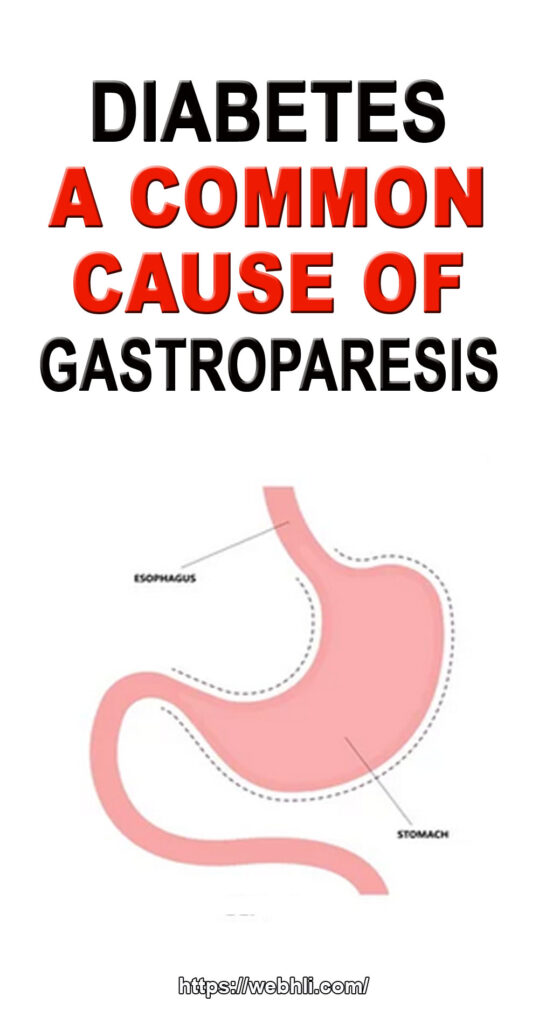
Diabetes is the most common cause of gastroparesis, or delayed gastric emptying. That's because high blood sugar causes chemical changes in nerves, including the vagus nerve, which controls the movement of food through the digestive tract. High blood sugar also damages the blood vessels that carry oxygen and nutrients to the nerves, further impairing their functioning.
Check out these related articles, too:
How Resistance Training Can Help You Heal Diabetes
Diabetic Breakfast Meal Planning, Truth Revealed!
Weight Loss and Blood Sugar Control
Arthritis And Diabetes - A Double Whammy
What Is Diabetic Gastroparesis?
Healthy Lifestyle Tips For Type 2 Diabetes
Does protein increase blood glucose levels?
How Does Diabetes Affect My Teeth and Gums?
When the vagus nerve is damaged, then the passage of food through from the stomach through the digestive track slows, or even stops. People commonly suffer from a wide range of gastroparesis symptoms, making the condition difficult to diagnose. Frequency and severity of symptoms also vary widely from individual to individual. Common symptoms are:
- heartburn
- nausea
- upper abdominal pain
- loss of appetite
- bloating
- stomach spasms
- weight loss
- vomiting undigested food
- feeling full after eating small amounts
- gastroesophageal reflux
- high or low blood glucose levels
Food that stays undigested in the stomach can harden into solid masses called bezoars. Bezoars not only cause nausea and vomiting; they can be dangerous if they block the passage of food into the small intestine. Undigested food can also ferment, leading to bacteria overgrowth.
Gastroparesis can complicate diabetes control in both type 1 and type 2 diabetes by delaying food in the stomach from entering the intestine. This irregular passage of food through the digestive system results in erratic and unpredictable blood glucose levels. When the food is finally absorbed, blood sugar levels may rise unexpectedly.
As a result, diabetics with gastroparesis must check their blood glucose frequently. They may need to adjust their insulin therapy, change the type of insulin they take, or take their insulin after meals instead of before to maintain proper insulin levels.
Gastroparesis is usually a chronic condition. While it can't be cured, it can be treated. People with gastroparesis are advised to eat six small meals a day instead of three large meals, and to avoid hard to digest high fiber and high fat foods and carbonated drinks. Severe cases may require a liquid diet, or even a feeding tube.
Patients are often given a dopamine antagonist such as prescription domperidone for gastroparesis. Domperidone (generic Motilium) treats both the condition and gastroparesis symptoms such as nausea, vomiting, bloating and a "full" feeling. Some sufferers will require antibiotics.
There is reason for hope for gastroparesis sufferers. Potential treatments still in the early stages include gastric electrical stimulation, the use of botulinum toxin, and experimental medications.
Check out these related articles, too:
Good Energy Food for Diabetics
10 Simple Food Concepts Every Person Living With Diabetes Should Know
Making Cheesecake For Diabetics
Enjoy the Taste and Benefits of Diabetic Foods
Will The Mulberry Leaf Help Your Diabetes?
5 DIABETIC FRIENDLY SALADS Some Tasty
DIABETIC LEMON COCONUT COOKIES Some Tasty
Lynn blogs about news and views of interest to diabetics at longactinginsulin.com. Check out the blog for updates on the latest diabetes research, and get a $10 off prescription coupon for Lantus SoloSTAR long acting insulin pens.
Article Source: http://EzineArticles.com/6022248

 Protected by Patchstack
Protected by Patchstack